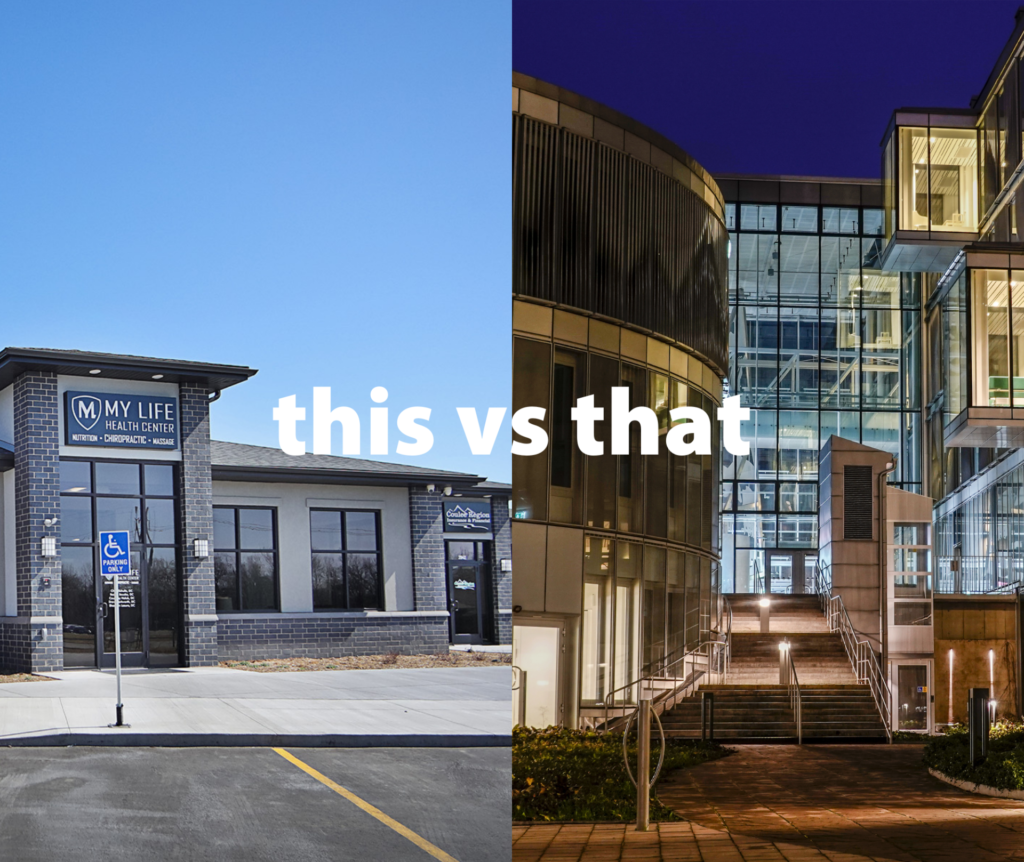
This versus that: vertical construction versus a larger building footprint
Here are the pros and cons of building up vs building out
When your next commercial construction project is in the planning stages, you could be in the position of considering whether to build up vertically or building out horizontally with a larger footprint. What costs might be associated with each that might not be immediately apparent? Which provides the benefits you’re looking for in your new build: building up vs building out? And what drawbacks should you consider as well?
Knowing whether to build up or build out requires some careful thought. Here are aspects of each you should consider before you finalize design plans and begin to build.
Larger footprint or vertical construction? Here’s what you need to know.
There are many pros and cons to weigh when deciding whether to build a broader, single-floor construction or a multistory building.
Vertical commercial construction pros and cons
- Can maximize land use, which is a benefit when lot size is small, when land is expensive or when commercial land is difficult to find, as is often the case in urban settings.
- Can provide additional space for parking, green space, site amenities, etc., whether required by code or to meet market demand.
- Smaller building footprints can result in reduced costs of building foundation systems.
- The need for elevators is likely, which comes at an initial cost as well as ongoing maintenance. In addition, elevators and stairwells can consume valuable space and reduce the amount of usable space for business needs.
- Cost of construction increases as building height increases, as the building structure becomes more complex, requires cranes to lift materials and equipment and requires additional safety measures to protect construction workers.
- A smaller rooftop means less exposed roof, which can help control the building’s heating and cooling costs.
- A building with a smaller footprint can better conserve energy through passive solar heating in the colder months and shade to promote cooling in the summer months.
- HVAC and plumbing systems can be more complex and expensive in multistory buildings than single-story buildings.
Larger footprint commercial construction pros and cons
- Requires more land area, which can increase the overall cost of the project significantly.
- Poor soil conditions are exacerbated with a larger building footprint, which can drive up project costs.
- A larger footprint can provide more flexibility in building design than with vertical construction.
- HVAC and plumbing systems can be less complex and less costly than those for vertical buildings.
- A large roof will likely expend more energy, driving up heating and cooling costs for the facility.
- Stormwater runoff from the building’s larger roof can be substantial and require a higher level of stormwater management than that from a smaller roof.
- An increase in building footprint size comes with an increased cost in the building foundation system.
- Single-level buildings can be more attractive in commercial lease settings, as tenants may enjoy closer proximity to parking lots, particularly for their clients.
- Opportunities for natural daylight via skylights and vaulted ceilings can add appeal and interest to the building.
Building up or out? The right partner is key.
When you’re considering whether to build vertically or expand your construction footprint, having the right commercial construction partner is key to knowing all of the pros and cons. With the design-build model of construction, you can have a crystal-clear picture of the potential benefits and drawbacks of each, giving you the knowledge you need to make the right choices for your build. When the time is right and you’re ready to build in the Upper Midwest or beyond, contact us for more information about whether vertical construction or a larger building footprint is right for your commercial project.